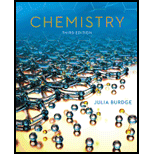
Concept explainers
Interpretation:
The materials that show good analogy for anisotropy are to be selected.
Concept introduction:
Anisotropy is the phenomenon by which a material shows different values of a given property in different directions. It is a characteristic of those materials thathave their constituent particles in an ordered arrangement. All the crystalline solids are anisotropic in nature.
The phenomenon in which a material shows the same values of a given property in different directions is termed as isotropy. It is a characteristic of those materials thathave their constituent particles in unordered or random arrangement. All the liquids, gases, and amorphous solids are isotropic in nature.
A material can either be isotropic or anisotropic, but not both.
Want to see the full answer?
Check out a sample textbook solution
Chapter 12 Solutions
Student Study Guide for Chemistry
- Compare picture I and II and choose: A = If the indicated property is greater in picture I than in II B = If the indicated property is less in picture I than in II C = If the indicated property is equal in both picture D = If no comparison can be made due to insufficient information stabilityarrow_forwardneed 1 2 3 4 don't copy from internetarrow_forwardI need given picturearrow_forward
 ChemistryChemistryISBN:9781305957404Author:Steven S. Zumdahl, Susan A. Zumdahl, Donald J. DeCostePublisher:Cengage Learning
ChemistryChemistryISBN:9781305957404Author:Steven S. Zumdahl, Susan A. Zumdahl, Donald J. DeCostePublisher:Cengage Learning ChemistryChemistryISBN:9781259911156Author:Raymond Chang Dr., Jason Overby ProfessorPublisher:McGraw-Hill Education
ChemistryChemistryISBN:9781259911156Author:Raymond Chang Dr., Jason Overby ProfessorPublisher:McGraw-Hill Education Principles of Instrumental AnalysisChemistryISBN:9781305577213Author:Douglas A. Skoog, F. James Holler, Stanley R. CrouchPublisher:Cengage Learning
Principles of Instrumental AnalysisChemistryISBN:9781305577213Author:Douglas A. Skoog, F. James Holler, Stanley R. CrouchPublisher:Cengage Learning Organic ChemistryChemistryISBN:9780078021558Author:Janice Gorzynski Smith Dr.Publisher:McGraw-Hill Education
Organic ChemistryChemistryISBN:9780078021558Author:Janice Gorzynski Smith Dr.Publisher:McGraw-Hill Education Chemistry: Principles and ReactionsChemistryISBN:9781305079373Author:William L. Masterton, Cecile N. HurleyPublisher:Cengage Learning
Chemistry: Principles and ReactionsChemistryISBN:9781305079373Author:William L. Masterton, Cecile N. HurleyPublisher:Cengage Learning Elementary Principles of Chemical Processes, Bind...ChemistryISBN:9781118431221Author:Richard M. Felder, Ronald W. Rousseau, Lisa G. BullardPublisher:WILEY
Elementary Principles of Chemical Processes, Bind...ChemistryISBN:9781118431221Author:Richard M. Felder, Ronald W. Rousseau, Lisa G. BullardPublisher:WILEY





